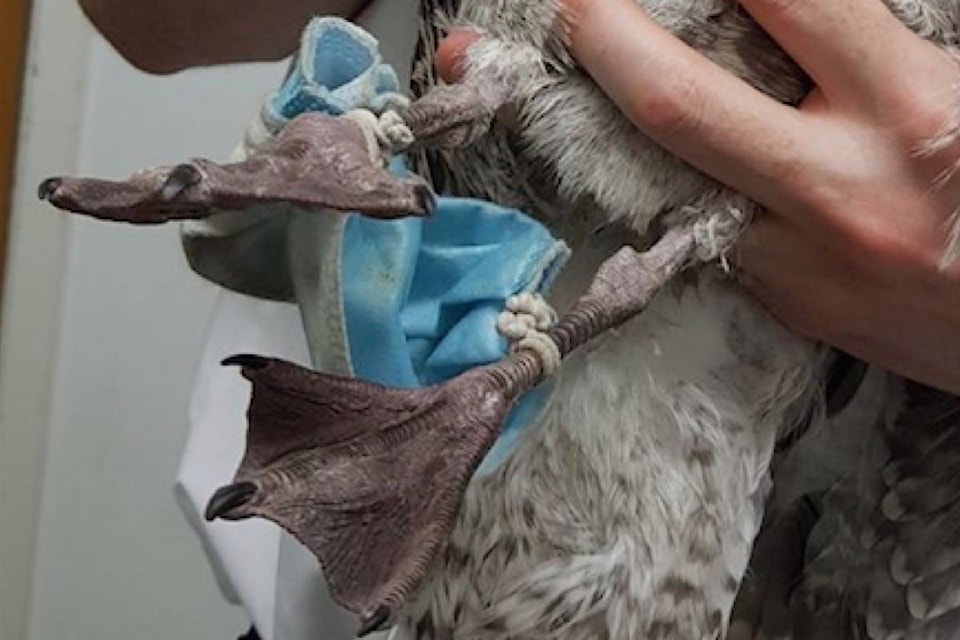It’s only a matter of time before local wildlife get tangled up in the strings of disposable masks, so the Kerry Wood Nature Centre wants people to take the time to cut the string loops.
“We see masks all over the place. We see them on the trail system. We’ve cleaned them out of the sanctuary,” said Todd Nivens, executive director of the Waskasoo Environmental Education Society.
“I’ve picked up masks on a regular basis as I walk to and from work. There are a lot of disposable masks out there.”
Nivens said the strings can get wrapped around beaks, bodies and feet, just like the six-pack rings people have been told for years to cut to eliminate the loops.
So far, neither the Kerry Wood Nature Centre nor Medicine River Wildlife Centre has found wildlife caught in mask strings.
But Nivens said a wildlife hospital in the United Kingdom is warning the public about the dangers after helping animals that had been injured.
Disposable masks made up a lot of the garbage collected during the citywide spring cleanup campaign, he said.
“We’re going to live with masks for awhile. When you dispose of them, just make sure they’re disposed of appropriately and properly, and you’re taking two seconds to clip the loops so animals don’t get entangled in them,” Nivens said.
Related:
Yard work is disturbing more birds
Wildlife officers answering dangerous police calls deserve more money: union
Carol Kelly, executive director at Medicine River Wildlife Centre, said more loons this season have been getting tangled up in angling lines and equipment, which may be due to more people having time to get out and fish during the pandemic.
During the mild autumn weather, people have also reported more wildlife remaining in central Alberta, she said.
“This is November. Our wetland at the wildlife centre is still filled with geese. We’re still seeing gulls flying around Red Deer. We’re seeing flocks of starlings on the side of the road.
“I was hoping (the birds) knew something we didn’t know. Maybe they know we’re going to have a nice winter,” Kelly said with a laugh.
szielinski@reddeeradvocate.com
Like us on Facebook and follow us on Twitter
